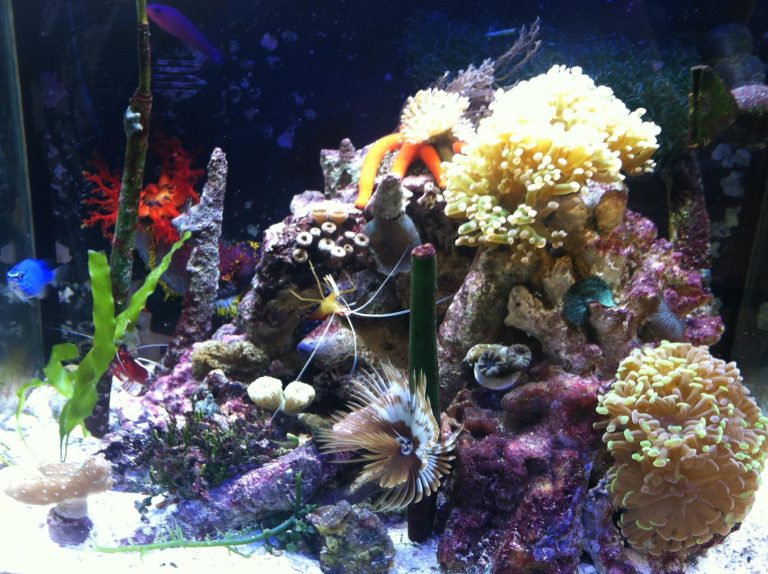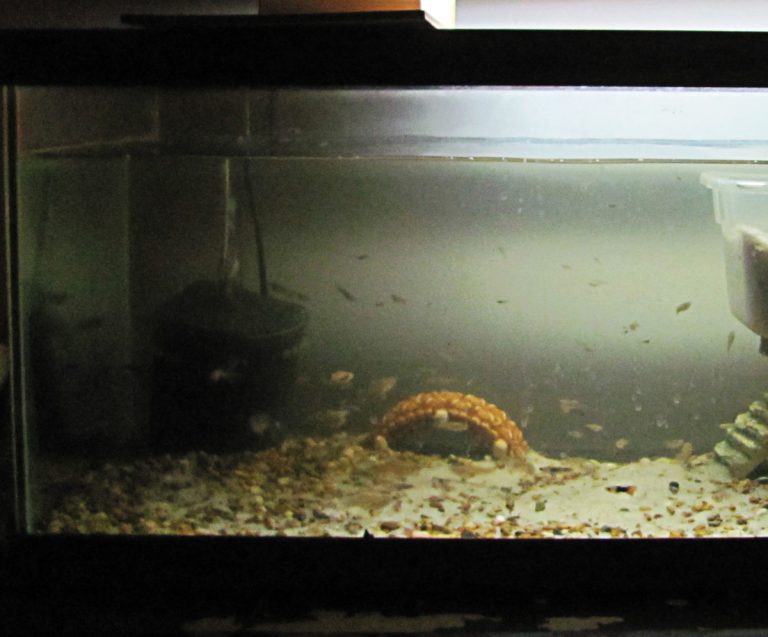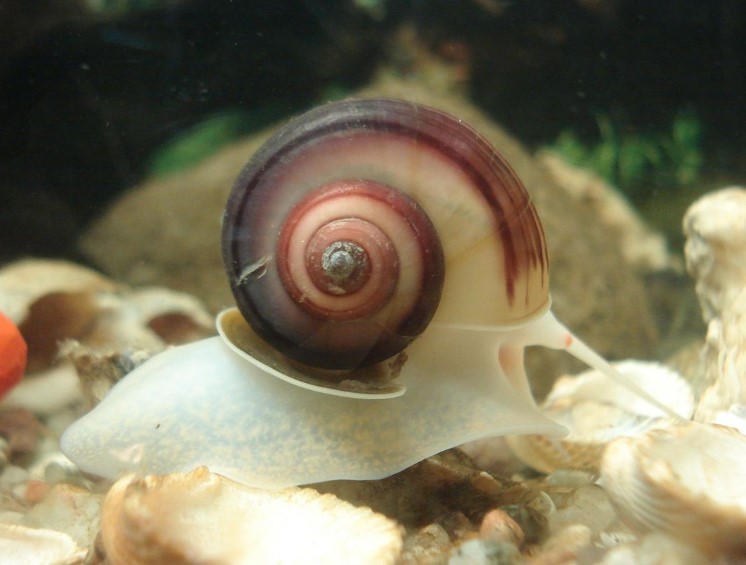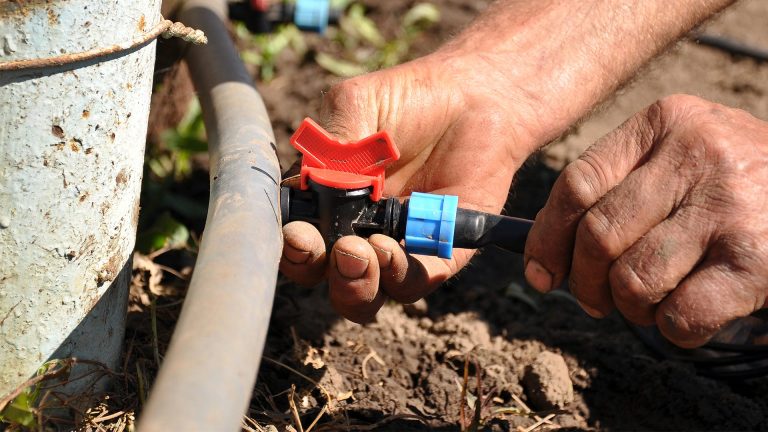Optimal pH Levels for a Healthy Freshwater Tank
The ideal ph level for a freshwater tank should be between 6.5 and 7.5. Maintaining this ph range is crucial for the health and survival of the fish and plants in the tank.
Fluctuating ph levels can cause stress, disease, and even death among the aquatic inhabitants. To ensure optimum water quality, regular ph testing and monitoring should be performed, and any necessary adjustments should be made promptly. Factors such as fish species, plant types, and the use of chemicals in the tank can affect ph levels, so it’s essential to consider all these factors when managing a freshwater tank.
In this article, we’ll discuss what ph levels are, why they are essential, and how to maintain them at the correct range in your freshwater tank for optimal health and well-being.

Credit: www.freshwatersystems.com
Understanding Ph Levels
Freshwater tank owners need to maintain optimal ph levels to keep their fish and aquatic plants healthy and thriving. Understanding what ph is, the ph scale, and the factors that impact ph levels can help ensure optimal conditions for aquatic life.
Definition Of Ph And Its Importance In Freshwater Tanks
Ph is a measure of the acidity or basicity of a substance and is critical for the health of fish and aquatic plants in freshwater tanks. Since different species of aquatic life have different ph requirements, maintaining appropriate ph levels can prevent stress, illness, and, in the worst cases, death.
The Ph Scale And Its Range
The ph scale ranges from 0 to 14, with 7 being neutral. A ph level below 7 is acidic, with 0 being the most acidic, and a ph above 7 is basic, with 14 being the most basic. For most freshwater fish, a ph level between 6.
5 and 7. 5 is essential to maintain their optimal health.
Factors Affecting Ph Levels In Freshwater Tanks
Several factors can impact ph levels in freshwater tanks, including:
- Tap water: Different water sources have different ph levels. It is essential to test the ph level of tap water and treat it accordingly.
- Biological processes: Biological processes such as respiration and waste excretion can impact the ph level of water. Decomposing matter and rotting vegetation can increase acidity in water.
- Adding chemicals: Adding chemicals to adjust other water parameters such as temperature can change the ph level of water.
- Substrates and decorations: Some substrates and decorations can affect the ph level of water. Driftwood and rocks, for instance, can leach tannins, which can lower ph levels.
Importance Of Maintaining Optimal Ph Levels For Freshwater Tank Health
Maintaining the optimal ph level in your freshwater tank is essential for the health and survival of your aquatic pets and plants. Here are some reasons why:
- Incorrect ph levels can lead to stress and illness in fish and other aquatic pets.
- Low ph levels can damage the gills of fish, making them more prone to disease.
- High ph levels can cause the buildup of ammonia, which can be toxic to fish and aquatic pets.
- A proper ph level is essential for beneficial bacteria to break down fish waste and other organic matter effectively.
Maintaining optimal ph levels in your freshwater tank is crucial to ensuring the health and well-being of your aquatic pets and plants. Various factors, such as tap water, biological processes, and decorations, can impact the ph level of water. Keep a close eye on ph levels and take steps to address issues as soon as possible to avoid harm to your aquatic pets.
Identifying Optimal Ph Levels
Identifying Optimal Ph Levels For Freshwater Tanks
Maintaining proper ph levels in your freshwater tank is a crucial aspect of keeping your aquatic pets healthy. The optimal ph range for most freshwater fish and plants is usually between 6. 5 and 7. 5, but some species may have specific preferences.
Here’s what you need to know when identifying the ideal ph levels for your freshwater tank.
Optimal Ph Levels For Different Freshwater Species
Different freshwater species may need varying ph levels to thrive at their best. Below are the optimal ph levels for some common freshwater species:
- Neon tetras: 5.5-7.5
- Goldfish: 7.0-8.4
- Discus: 6.0-7.5
- Betta fish: 6.0-8.0
Ph Ranges For Different Stages Of A Freshwater Tank’S Lifecycle
The ph levels in a freshwater tank can change over time as a result of biological processes and other factors. Here are some ph ranges to aim for during different stages of a freshwater tank’s lifecycle:
- New tank setup: 6.8-7.0
- Mature tank: 6.4-7.0
- Breeding tank: 6.5-7.5
Maintaining the proper ph levels for your freshwater tank is essential for the health and wellbeing of your fish and plants. Always monitor your aquarium’s ph levels and make adjustments if necessary to ensure a stable and healthy environment for your aquatic pets.
Ph Testing Methods
Testing the ph levels in a freshwater tank is an essential aspect of maintaining a healthy and thriving aquarium. Ph stands for power of hydrogen and it’s the measure of acidity or alkalinity of the water. Measuring ph levels can help fish keepers understand if there’s any problem with their aquarium and can head off any related issues before they become severe.
The following sections will explore the ph testing methods, common ph testing kits, their accuracy, and the frequency of testing ph levels in a freshwater tank.
Interpreting Ph Test Results
Ph test results typically range from 0 to 14, with 7 being the neutral range. If the ph in your freshwater tank is between 6. 0 and 8. 0, then it’s considered a healthy range for most freshwater fish and plants.
However, certain species of fish and plants require different ph ranges, so it’s essential to know your fish and plants’ optimum ph range before measuring and adjusting ph levels. For instance, if the water is too acidic (below 6. 5), it can be harmful to some fish species, whereas if it’s too alkaline (above 8.
5), it can lead to plant death.
Common Ph Testing Kits And Their Accuracy
Several types of ph testing kits are available, and each has its accuracy level. Here are some common ph testing kits used in freshwater tanks:
- Liquid test kits: These are the most accurate ph kits and can measure the ph range from 6.0 to 8.0. They come with a dropper and a test tube and take a few minutes to complete.
- Test strips: These are the easiest kits to use and also provide results quickly. They come in the form of strips and measure ph between 6.2 to 9.0. The results are indicated by a color change on the strip. However, they are less accurate than the liquid test kits as they can only measure ph in increments of 0.2.
- Electronic ph meters: These are the most expensive ph kits and provide accurate results. They are digital and quick to use, but require calibration before use and need regular maintenance.
Frequency Of Testing Ph Levels In A Freshwater Tank
Aquarium owners should check their ph levels weekly, especially if they add new fish or plants to the tank. Water changes or the addition of supplements can cause the ph levels to fluctuate. It’s critical to keep the ph levels consistent while maintaining the optimum range suitable for the fish and plants.
Overall, ensuring a proper ph level in your freshwater tank is a crucial aspect of maintaining your aquarium’s health. By regularly testing and adjusting ph levels, a fishkeeper can ensure that their fish and plants thrive in their environment.
Adjusting Ph Levels
Maintaining the right ph levels in your freshwater tank is crucial for healthy fish and plants. But, what should ph levels be in a freshwater tank, and how do you adjust it? This section will explore these essential questions, with step-by-step instructions for adjusting ph levels, choosing the right ph adjustment method, and precautions to consider when adjusting ph levels in a freshwater tank.
Choosing The Right Ph Adjustment Method
Several methods exist for adjusting ph levels in a freshwater tank. Here are three of the most popular:
- Chemical ph adjusters – these are the most common adjustment method and come in powder and liquid form. They add acid or alkalinity to your tank, depending on the product.
- Organic materials – these adjusters are ideal for those wanting a natural method of adjusting ph levels. Materials like driftwood, peat, and almond leaves can all release tannic acids that help reduce ph levels.
- Co2 injection – this is the best method for those striving to achieve a stable ph level in their aquarium. A co2 injection system with a ph controller can automatically adjust ph levels as required, making it the ideal solution for larger tanks.
Step-By-Step Instructions For Adjusting Ph Levels
Follow these steps to successfully adjust ph levels in your freshwater tank:
- Test your water – before adjusting ph levels, test your water to determine your starting ph level.
- Choose your ph adjustment method – based on your water test results, choose one of the ph adjustment methods mentioned above that will help you achieve your target ph level.
- Determine the quantity of product needed – calculate the correct dosage based on the product’s instructions and your tank’s size.
- Turn off equipment – for safety reasons, it is recommended to turn off all aquarium equipment while adjusting ph levels.
- Add the ph adjuster – carefully add the chosen ph adjuster to your tank. It’s recommended to pour it near the water flow for even distribution.
- Wait and test again – after adding the ph adjuster, wait for at least four hours before testing the water again. This allows the ph adjuster to dissolve and thoroughly mix through the tank.
- Repeat – if necessary, repeat these steps until the desired ph level is achieved.
Precautions When Adjusting Ph Levels In A Freshwater Tank
Several precautions need to be considered when adjusting ph levels in a freshwater tank. Here are some key points to keep in mind:
- Avoid sudden ph changes – sudden ph changes can shock fish and plants, leading to health issues and even death. Aim to adjust ph levels gradually over several days.
- Monitor closely – regularly test your water to ensure ph levels remain within the optimal range for your fish and plants.
- Use the correct dosage – always use the recommended dosage for your chosen ph adjustment product. Too much can result in over-adjusting and damaging your tank inhabitants.
- Safety first – always turn off aquarium equipment when adding ph adjusters. Additionally, avoid inhaling any chemicals or getting them on your skin.
By following these step-by-step instructions and precautions, you can safely adjust ph levels in your freshwater tank, creating an ideal environment for your fish and plants to thrive.
Frequently Asked Questions Of What Should Ph Levels Be In Freshwater Tank
What Is The Ideal Ph Level For A Freshwater Tank?
The ideal ph level for a freshwater tank is between 6. 8 and 7. 2.
What Happens If Ph Levels Are Too Low In A Freshwater Tank?
If ph levels are too low in a freshwater tank, it can harm the fish and cause problems with beneficial bacteria.
What Happens If Ph Levels Are Too High In A Freshwater Tank?
If ph levels are too high in a freshwater tank, this can cause stress and even death in fish. It can also lead to algae blooms.
How Often Should I Test The Ph Levels In My Freshwater Tank?
It is recommended to test ph levels in a freshwater tank at least once a week. However, if you add new fish or make significant changes to the tank, test more often.
Conclusion
Maintaining the right ph levels in your freshwater tank is crucial for creating a healthy and thriving aquatic environment. From the information provided in this blog post, it’s clear that ph levels could vary based on the fish species in your tank.
It’s always advisable to do your research on your fish species and their ph requirements before setting up a freshwater tank. A sudden change in ph levels could stress your fish, and in some cases, even cause fatal consequences. With the right tools and knowledge, anyone can maintain the right ph levels in their freshwater tank.
Regular testing and monitoring your ph levels, coupled with the right treatment methods, will keep your fish happy and healthy. Remember that keeping a freshwater tank is a rewarding and enjoyable experience, and the right ph level is a crucial aspect of it.






